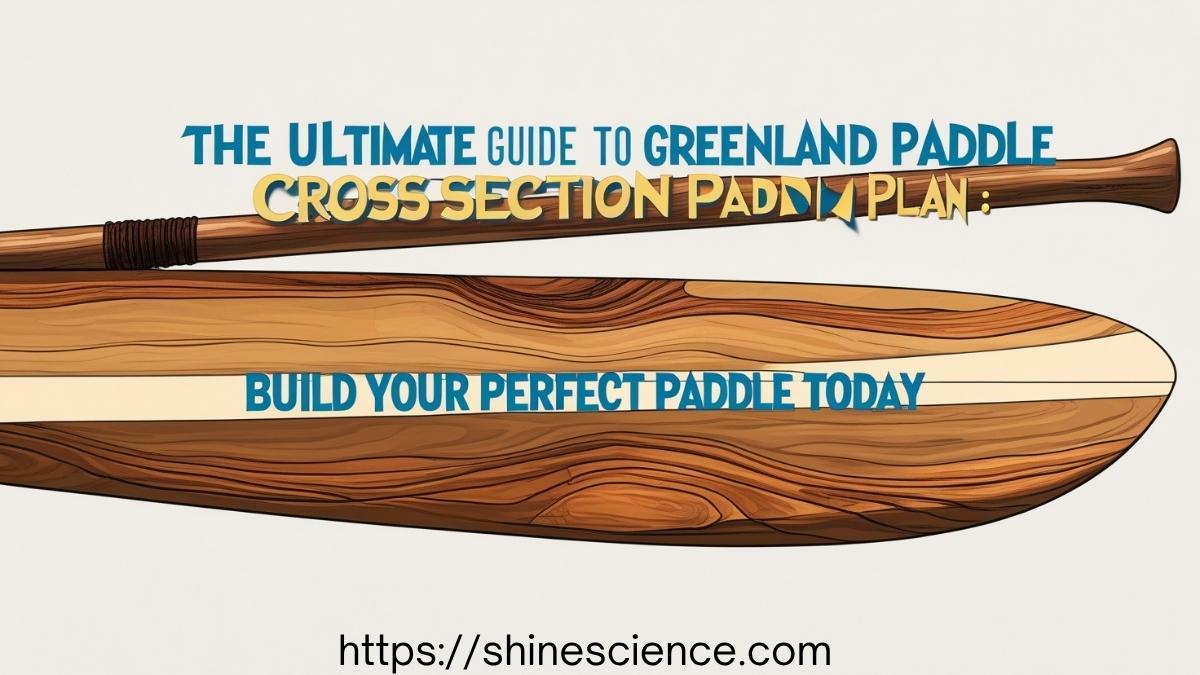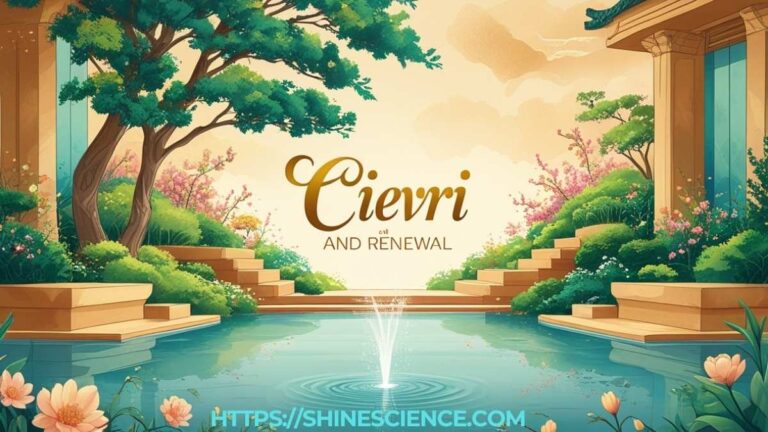
Introduction: The Beauty of the Greenland Paddle
Greenland Paddle Cross Section Plan, The Greenland paddle is more than just a tool for kayaking — it’s a piece of heritage. Traditionally carved by the Inuit people, this paddle offers simplicity, efficiency, and unmatched connection with water. Its elegant design slices through waves with minimal resistance, making it a favorite among sea kayakers.
If you’ve ever dreamed of building your own Greenland paddle, understanding the cross section plan is the most important step. This cross section dictates how your paddle will perform, feel in your hands, and respond to water. With the right plan, anyone — beginner or pro — can craft a paddle that glides smoothly and lasts for years.
What Is a Greenland Paddle Cross Section Plan?
Understanding the Concept
A Greenland paddle cross section plan is a drawing or diagram showing the shape of the paddle when viewed from the end — basically, what the blade and shaft look like if you cut it across horizontally. This determines the thickness, taper, and shape of the paddle at various points: the blade tips, shaft, and transitions.
Why It Matters
The shape impacts:
- How much water the paddle moves
- How easily it enters and exits the water
- How it feels during long trips
- Your control over the kayak
Getting the cross section right means better grip, less fatigue, and a smoother ride.
Benefits of Building Your Own Greenland Paddle
Before diving into the actual plan, here are some reasons why building your own Greenland paddle using a proper cross section plan is a great idea:
Cost-Effective
Store-bought Greenland paddles can cost anywhere from $150 to $300. Making your own? Around $30-$50 in materials.
Custom Fit
You choose the exact size, length, grip thickness, and blade width to match your body and paddling style.
Cultural and Personal Value
There’s something magical about crafting something with your own hands — especially when it connects to centuries of kayaking tradition.
Greenland Paddle Dimensions: Start with the Basics
To design your Greenland paddle, start with standard dimensions and adjust as needed:
- Length: Your height + the length from fingertip to fingertip with arms extended
- Blade Width: 3” to 3.5”
- Shaft Width: 1.25” by 1.5”
- Blade Thickness at Tip: ~1/4”
- Loom (shaft) Length: Width of your shoulders
These measurements guide your cross section design.
Step-by-Step Greenland Paddle Cross Section Plan
Let’s break down how to design and build a Greenland paddle with proper cross section details:
Step 1: Choose the Wood
Use lightweight, straight-grained, soft wood:
- Western Red Cedar
- Sitka Spruce
- Pine (for beginners)
Avoid knots and warping.
Step 2: Mark Out the Loom and Blade
- Measure and mark the total length.
- Mark the loom (central grip).
- Taper out from the loom to each blade end.
Step 3: Draw the Cross Sections
Use graph paper or CAD software to sketch these:
- Shaft Cross Section: Oval or rectangle with rounded edges for comfort.
- Blade Cross Section (base): Diamond shape that gradually flattens.
- Blade Midsection: Rounded edges, thin profile.
- Blade Tip: Thin and narrow for clean water entry.
Step 4: Cut the Blank
Using a table saw or hand tools, cut out the rough paddle shape from your wood board (usually 2×4).
Step 5: Shape the Cross Section
- Use a plane to create a smooth diamond or wing shape for the blades.
- Round the edges where the blade meets water.
- Sand down to remove sharp corners or excess thickness.
- Use the cross section plan as a guide at every 6-12 inches.
Step 6: Final Finish
- Sand to 220 grit
- Apply tung oil or linseed oil for waterproofing
- Let dry and repeat oiling for 3–4 coats
Greenland Paddle Cross Section Templates: Free and Paid Resources
Free Templates:
- Qajaq USA: Offers traditional Inuit-inspired templates
- Instructables: Community-created diagrams
- PaddleBuilder.org: Interactive plan generator
Paid Plans:
- Greenland Paddle Plans by Bryan Hansel ($10–$20)
- DIYKayakBuilder: 3D printable cross sections
- WoodenBoat Magazine Back Issues: Detailed drawings and expert tips
Expert Tips for a Perfect Cross Section Plan
Keep the Transition Smooth
Make sure the change from shaft to blade is gradual, not abrupt.
Use a Caliper
To check thickness as you carve, ensuring symmetry on both sides.
Try Test Cuts
Use scrap wood to practice shaping cross sections before touching your final board.
Avoid Flat Paddle Blades
Fully flat blades create noise and resistance. Your cross section should be slightly curved for smooth gliding.
Greenland Paddle Cross Section Variations
There’s no single “correct” shape. Here are a few variants:
1. Shouldered vs. Shoulderless
- Shouldered paddles have a defined ridge between loom and blade.
- Shoulderless paddles flow smoothly, good for sliding stroke styles.
2. Wide Blade vs. Narrow Blade
- Wide blades offer more power but require better technique.
- Narrow blades are easier for beginners and minimize joint strain.
3. Storm Paddles
- Short paddles with shorter looms — great for backup or windy conditions.
Maintenance After Building
- Oil Regularly: Every 3–4 weeks with tung or linseed oil.
- Avoid Sunlight: Store indoors or under cover.
- Check for Cracks: Use fine sandpaper to smooth small splinters.
Two Real-Life Paddle Builder Stories
Mark, 45, Kayaker from Oregon
“I followed a simple Greenland paddle cross section plan I found online. The process was easy, relaxing, and now I can’t imagine using anything else.”
Ayesha, 30, DIYer from Norway
“My shoulder pain disappeared after switching to a handmade paddle. The custom grip from my cross section plan made a huge difference.”
Conclusion: You Can Build It Too!
Building your own Greenland paddle is more than a weekend project — it’s a rewarding journey. And the key to success lies in the cross section plan. It determines how the paddle flows through water, how it feels in your hand, and how it performs during long sessions.
Don’t be overwhelmed by the shaping process. With a bit of patience, a solid plan, and the right tools, you’ll create something useful, beautiful, and very personal.
Final Thoughts: Paddle Like a Pro
Whether you’re kayaking on the ocean or a calm lake, a well-built Greenland paddle offers comfort, tradition, and efficiency. With the perfect cross section plan, you’re not just paddling — you’re gliding with grace. So grab that cedar plank, sketch out your design, and get started on your very own Greenland paddle today.
FAQs: Greenland Paddle Cross Section Plan
Q1. What is the best wood for a Greenland paddle?
Answer: Western Red Cedar is popular due to its lightweight and smooth grain. Pine and spruce are also good for beginners.
Q2. How thick should a Greenland paddle blade be?
Answer: Around 1/4” at the tip, gradually thicker near the loom.
Q3. Can I make a Greenland paddle without power tools?
Answer: Yes! With a hand plane, rasp, and sandpaper, you can shape a paddle manually. It just takes more time.
Q4. What’s the difference between shouldered and shoulderless paddles?
Answer: Shouldered paddles have a ridge between the grip and blade; shoulderless ones have a smooth transition.
Q5. Where can I find free Greenland paddle cross section plans?
Answer: Check sites like Qajaq USA, PaddleBuilder.org, and Instructables for downloadable templates and guides.



